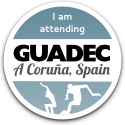In my last post I described how, during this year’s GUADEC, members of the GNOME community came together to plan where the project could go in the next 18 months or so. The slides from Xan and Juanjo’s talk give some of the background to those discussions. We took copious notes during the planning sessions that were held; these will all be available online soon, so you can get a more detailed picture if you want one. In what follows I’ll try to give a bit an overview.
But first, a clarification. The idea of GNOME OS has been around for a couple of years, and there has been a fair amount of confusion about what it means. Some people seem to have assumed that GNOME OS is an effort to replace distributions, so let me be clear: that is not the case. While the creation of a standalone GNOME OS install does feature as a part of our plans, this is primarily intended as a platform for testing and development. In actual fact, all of the improvements that we hope to make through the GNOME OS initiative will directly improve what the GNOME project is able to offer distributions.
Many of the things that we want to do as a part of GNOME OS are old ideas that have been around in the GNOME project for a really long time. The aspirations that are driving this process include things like providing a better experience for application developers, automated testing, sandboxed applications and broad hardware compatibility. While each of these goals could be pursued independently, there are enough interconnections between them to make a holistic plan worthwhile. Yes we could call the initiative something else, but GNOME OS has stuck, and it kinda fits (as I hope to explain a bit better below).
We’re setting out to drain swamps, fix the most glaring issues in our ecosystem, and establish a new model for the future. We don’t know whether we’ll succeed, but there are enough people in our community who care about these issues that we just might be able to do it. The best part is: you can help.
Continue reading GNOME OS







